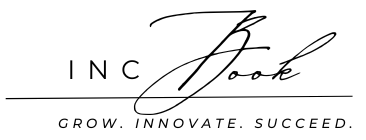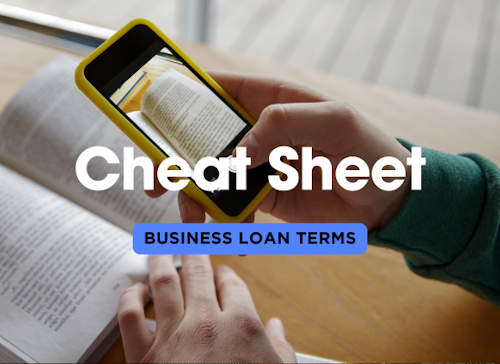This will be easy to understand – we promise.
APR (Annual Percentage Rate) 📅💰
Think of this like the “price tag” on a loan. It tells you how much it costs to borrow money in a year, including any extra fees. So if you borrow $100, the APR tells you how much extra you have to pay back by the end of the year!
Amortization 📉📅
Imagine you borrowed a toy and had to give it back little by little. Amortization is like paying back a loan in small pieces over time. Each time you pay, part goes to the cost of borrowing, and part goes to giving back what you borrowed.
Collateral 🏦📜
This is like leaving something valuable as a promise. If you borrow a toy and promise to give back your favorite book if you don’t return it, the book is collateral. For a loan, it’s usually something big, like a car or a house.
Principal 💵💼
The principal is the main chunk of money you borrow. If you borrow $100, that $100 is the principal. You’ll also have to pay some extra money (interest) for borrowing it, but the principal is the base amount.
Term Loan 🕒📊
A term loan is like borrowing money for a set amount of time, like a homework deadline. You have to pay it back in full by a certain date, with regular payments along the way, like every week or month until it’s all done.
Line of Credit 🏦💳
Imagine this like a credit card. You have a limit on how much you can borrow, but you don’t have to take it all at once. You can borrow just what you need and only pay interest on what you’ve used, like using a small part of your allowance for candy instead of spending it all.
Fixed Interest Rate 📏💡
This is like always paying the same price for your favorite snack, no matter what. With a fixed interest rate, your loan payments stay the same every month, so you always know how much you’ll owe.
Variable Interest Rate 📈📉
This is like the price of ice cream going up or down depending on the weather. A variable interest rate changes over time, which means your loan payments can go up or down depending on market conditions.
Balloon Payment 🎈💸
Imagine paying for a toy bit by bit, but when you reach the end, you have to pay a big chunk all at once! That’s what a balloon payment is: smaller payments for a while, followed by one big payment at the end of the loan.
Debt Service Coverage Ratio (DSCR) 💡📊
This one’s a bit tricky, but think of it like your allowance versus chores. If you earn more than enough allowance to do all your chores, you’re in good shape. DSCR tells lenders if you’re making enough money to pay back your loan easily.
Interest-Only Loan 🕒💵
This is like borrowing a toy and just paying a small fee to borrow it for a while, without giving any part of the toy back yet. For a while, you only pay the cost of borrowing (interest), and later you’ll pay back the full amount you borrowed (principal).
Prepayment Penalty 🚫💸
Imagine if you saved up and wanted to give back a borrowed toy early, but you had to pay a fee for doing it sooner than expected. A prepayment penalty is when a lender charges you for paying off a loan earlier than agreed.
Secured Loan 🔒🏠
This is a loan where you promise something valuable, like your bike or your house, in case you can’t pay it back. If you don’t pay the loan, the lender can take what you promised (collateral).
Unsecured Loan 📄🚫
This is a loan where you don’t have to promise any of your stuff. The lender trusts you based on things like your credit score, but if you don’t pay back the loan, they can still come after you, just not by taking specific items.
Balloon Loan 🎈💰
Similar to a balloon payment, but this time the loan itself is designed with smaller payments over time and one big payment at the end. It’s like slowly paying for a toy and then having to pay a big chunk at the end of the deal.
Loan-to-Value Ratio (LTV) 📊🏠
Imagine you want to buy a bike that costs $100, but you can only borrow up to $80. The loan-to-value ratio is the percentage of the bike’s value (or any asset) that a lender is willing to lend you. If they lend you 80%, that’s an 80% LTV.
Personal Guarantee 🤝👤
This is like giving your word, but even stronger. When you sign a personal guarantee, you’re saying that if your business can’t pay back the loan, you’ll pay it back personally—even if it means using your own savings.
Working Capital 💼💵
Think of this as your business’s allowance to pay for day-to-day stuff, like buying supplies or paying workers. It’s the money you need to keep your business running smoothly.
Term Sheet 📑✍️
A term sheet is like the “rules” for a loan. It’s a document that lists all the important details, like how much you’re borrowing, how long you have to pay it back, and the interest rate.
Default 🚫💔
This is what happens when you don’t pay back the loan as promised. It’s like breaking a big promise to your lender. If you default, the lender can take legal steps to get their money back, like taking your collateral.
Credit Score 📈🔢
Think of a credit score like your school report card, but for money. It’s a number that shows how good you are at paying back money you’ve borrowed. The higher the number, the more trustworthy you look to lenders.
Equity 🏢💰
Equity is the value of something you own minus any loans you owe on it. For example, if you own a house worth $100,000 but still owe $60,000 on a loan, your equity is $40,000. In business, it’s how much of the company you truly own.
Guarantor 👥🔒
A guarantor is like a friend who promises to help you pay back a loan if you can’t. So, if you can’t make a payment, the lender will go to your guarantor to get the money instead.
Balloon Mortgage 🎈🏠
This is a special kind of loan for buying property. It starts with small payments for a while, and then you have to pay a big lump sum (the “balloon” payment) at the end. It’s like slowly buying a house and then paying for the rest all at once.
Capital 💼💵
Capital is like the money fuel for your business. It’s the money you need to start, run, or grow your business, like the cash you use to buy equipment, hire people, or stock up on inventory.
SBA Loan 🏦🇺🇸
An SBA loan is a special type of loan made easier to get because the government (Small Business Administration) promises to pay part of it if you can’t. It helps small businesses get money with lower interest rates and longer repayment terms.
Bridge Loan 🌉💵
This is like a temporary loan that “bridges” the gap when you need quick cash before a bigger, more permanent loan comes through. It’s used to cover short-term expenses while waiting for long-term funding.
Invoice Factoring 📄💸
Imagine you sold something but the buyer hasn’t paid yet. With invoice factoring, you can sell that unpaid invoice to a lender for quick cash. The lender gets the money when your buyer finally pays up.
Merchant Cash Advance 💳🏦
A merchant cash advance is like getting a cash advance based on future sales. The lender gives you money upfront, and you pay it back by giving them a small piece of your daily sales until it’s all repaid.
Refinancing 🔄🏠
Refinancing is when you take out a new loan to pay off an old one, usually to get a better interest rate or lower payments. It’s like trading in an old bike for a new one with better features.
Interest Rate 📊💵
This is the extra cost you pay for borrowing money. If a lender gives you $100, the interest rate is the percentage of extra money you owe on top of that over time. It’s like paying a little extra for borrowing someone’s favorite toy.
Revolving Credit 🌀💳
Revolving credit is like having a piggy bank you can keep using. Once you pay back the money you borrowed, you can borrow it again up to a set limit, like refilling your piggy bank after spending it.
Creditworthiness 🏆💼
This is how trustworthy you are in the eyes of a lender. It’s like your trust level with a friend—if they believe you’ll pay them back, they’ll lend you money. Things like your credit score and financial history show how creditworthy you are.
Working Capital Loan 💼🏦
This is a loan to help with the everyday expenses of running your business, like paying bills, buying supplies, or covering payroll. It’s like getting an allowance to cover your daily needs.
Balloon Installment Loan 🎈📅
This is like a regular loan with smaller payments at first and one large final payment (the “balloon”) at the end. It’s a way to get a loan and pay less each month, but you’ll need to be ready for that big payment at the end.
Secured Debt 🔒💸
Secured debt is a loan that’s backed by something valuable you own, like a car or a house. If you can’t pay back the loan, the lender can take that item. It’s like borrowing a friend’s toy and promising to give them your favorite toy if you don’t return it.
Unsecured Debt 🚫🔑
This is a loan where you don’t have to offer anything as collateral. The lender trusts you to pay it back based on your credit history, like borrowing money from a friend without having to give them something to hold onto.
Debt Consolidation 💼🔗
This is when you combine several loans into one new loan to make your payments easier. It’s like putting all your borrowed toys in one basket so you only have to worry about one thing instead of many.
Term Sheet 📜🖊️
A term sheet is a document that outlines all the key details of a loan agreement. It’s like a rulebook that shows you how much you’re borrowing, how long you have to pay it back, and what the interest rate is.
Balloon Mortgage 🎈🏠
A balloon mortgage is a special type of loan for buying property, where you make small payments at first but have to pay a big chunk of the loan at the end. It’s like buying a house piece by piece, then paying off a large amount all at once.
Cash Flow 💵🔄
Cash flow is the money coming into and going out of your business. It’s like the water in a fountain—it keeps flowing, and you need enough coming in (sales) to cover what’s going out (expenses).
Loan Maturity 📅🔚
This is the date when your loan must be fully paid off. It’s like the finish line in a race. When your loan reaches maturity, all payments must be complete.
Debt Financing 💳🏦
Debt financing is when a business borrows money that must be paid back, usually with interest. It’s like borrowing lunch money from a friend and agreeing to pay it back with an extra snack later.
Equity Financing 🏢📈
Instead of borrowing money, equity financing is when you sell part of your business to investors to get cash. It’s like trading a piece of your pie for more ingredients to make a bigger pie.
Leverage 🏗️💪
Leverage is when a business uses borrowed money to try to make more money. It’s like borrowing tools to build something faster and hoping you’ll earn enough to pay for the tools and make a profit.
Prime Rate 📈🏦
The prime rate is the interest rate that banks charge their best customers. It’s like getting the special price at your favorite store because you’re a loyal customer.
Accrued Interest 💸⏳
This is the amount of interest that builds up over time before you pay it. It’s like a snowball that gets bigger the longer you wait to pay your loan.
Covenant 📜💼
A covenant is a rule or condition set by the lender that you must follow as part of your loan agreement. It’s like a set of instructions you need to follow to keep borrowing the money.
Loan Default 🚫💥
Loan default happens when you stop making payments as agreed. It’s like breaking a promise to return a borrowed toy, and the lender can take action to get their money back.
Grace Period ⏳😊
This is the extra time given after a payment is due before penalties kick in. It’s like having a little extra time to return a library book without getting a late fee.



